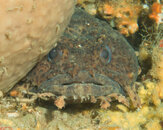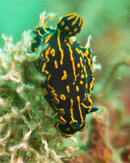flyingDiver75
Contributor
Just took delivery of the new DC2000 Pro Duo combo and had a chance to dive it today off Destin, Florida.
Very impressive resolution and dynamic range - this is going to be a fun camera!
Attached are some close crops from 2 of the better pictures of the day. If you're curious about just how much you gain by shooting RAW with this camera, I've posted a Flickr Album that has a set of ~25 images in their 'as taken' JPG format and then the processed version I created using Photoshop. Most adjustments were for exposure & contrast and little else.
I had some brain fade issues diving the camera for the 1st time and tried to include a representative sample of good and bad shots:


Very impressive resolution and dynamic range - this is going to be a fun camera!
Attached are some close crops from 2 of the better pictures of the day. If you're curious about just how much you gain by shooting RAW with this camera, I've posted a Flickr Album that has a set of ~25 images in their 'as taken' JPG format and then the processed version I created using Photoshop. Most adjustments were for exposure & contrast and little else.
I had some brain fade issues diving the camera for the 1st time and tried to include a representative sample of good and bad shots:
- I bumped the program dial early in dive one and put the camera in Manual mode instead of Underwater mode and didn't catch it until 1/2 through the dive. Most of the heavily blown-out photos are from that time
- To put the auto-light into 'auto' mode you have to tap through the brightness settings when it powers on. It would be great if auto mode was the default instead when the light is powered on. Some of the other blown-out photos are from not having the light set to auto when the flash fired






